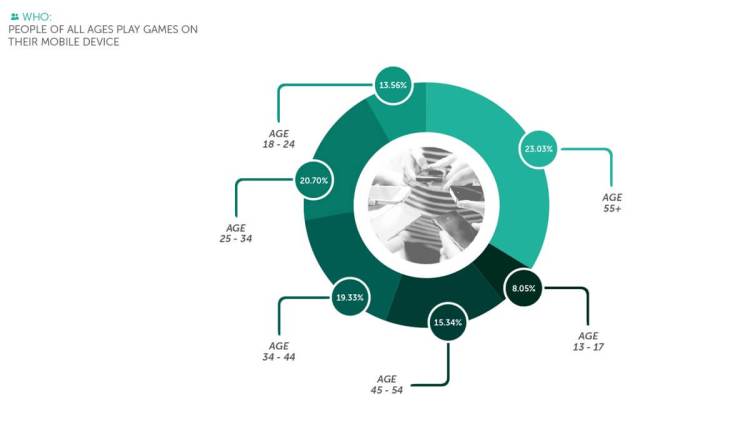Consumers feel happier and more engaged when they are playing mobile games than when they are using social networks, according to a research report from mobile monetization firm Tapjoy.
Tapjoy conducted the report to find out what motivates mobile gamers, which are a highly desirable consumer audience for brand advertisers.
One finding from “The Changing Face of Mobile Gamers: What Brands Need to Know,” is that consumers are twice as likely to say they feel relaxed when playing mobile games than they are when using social apps.
They also say they feel more focused (35 percent vs 11 percent), happier (34 percent vs 21 percent), and more engaged (35 percent vs 20 percent) on gaming apps than social networking apps. Conversely, consumers are 2.4 times more likely to feel bored on social apps than gaming apps, and 60 percent more likely to feel stressed.

Above: Tapjoy’s survey of mobile gamers shows how they feel while playing.
“When designing their digital advertising strategies, it’s critical that brands take into consideration the activities that consumers are engaged in at the time and how they make them feel,” said Shannon Jessup, chief revenue officer of Tapjoy, in a statement. “There are nearly 2 billion mobile gamers in the world, and the unique state of mind consumers have when playing games on their smartphones or tablets represents an incredible opportunity for brands to truly connect with consumers.”
Another finding: More than two-thirds of consumers who play games do not identify themselves as a gamer. Even among those who said that they play mobile games six times per week or more, less than one in three identify as a gamer.
Women represent the majority of mobile gamers, making up 63 percent of the total player base. Consumers 55 and over are the largest age group, representing 23 percent of the respondents, with consumers ages 25 to 34 representing 21 percent and those 35 to 44 representing 19 percent.
Consumers with a household income of $100,000 or more make up 17 percent of mobile gamers, with another 37 percent earning between $50,000 and $99,000.
70 percent of mobile gamers say they play while sitting in front of the television, and they are more than twice as likely to play while relaxing at home than while at work or during their commute. They are also more than twice as likely to play at night right before they go to bed than when they first wake up in the morning.

Above: Tapjoy’s survey shows when people play mobile games.
Puzzle games are most popular category, played by 59 percent of respondents. Strategy (38 percent), trivia (33 percent) and casino/card (27 percent) games were next on the list, respectively. Among the least popular games are player-vs-player (15 percent), Sports (11 percent), and Shooting (8 percent).
The report is based on a third-quarter survey of 5,623 unique smartphone and tablet owners. Consumers had to be 18 and above to take part. The survey was run through mobile gaming apps on iOS and Android, so by default all respondents played mobile games on at least one occasion. Tapjoy reaches about 520 million monthly active users.
VentureBeat's mission is to be a digital town square for technical decision-makers to gain knowledge about transformative enterprise technology and transact. Learn More

